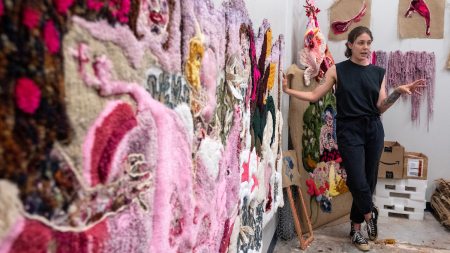When Carolina students take ARTS 115: Darkroom Photography I, they have a chance to dive into the history of photography, learn film techniques and gain the experience of working in a darkroom.
“My goal is for my students to experience and appreciate the magic of engaging in film photography and darkroom printing,” said Lindsay Metivier, a visiting lecturer in the College of Arts and Sciences’ art and art history department and owner of Peel Gallery and Photo Lab in Carrboro. “I want them to feel connected to each other and to a rich tradition, history and community of photographers.”
University photographer Johnny Andrews tagged along and made his own analog photographs of Metivier’s class during the spring 2024 semester.







